The Galician Battle
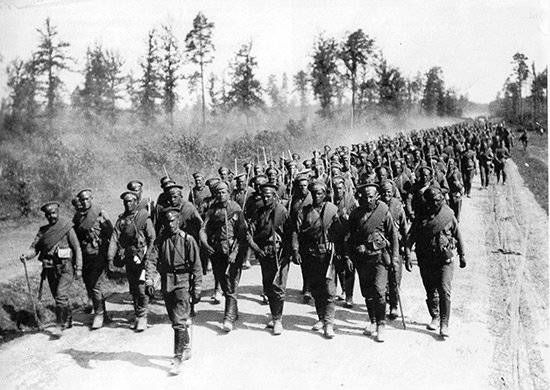
100 years ago, in August - September 1914, the Battle of Galicia took place between the Russian and Austro-Hungarian armies. It was one of the biggest battles of the 1 World War II. In Galicia and Poland, on the 400-km front, about 2 million soldiers and up to 5 thousand guns clashed.
The strategic importance of the Battle of Galicia was great. Although the goal of the Russian South-Western Front was not realized - they planned to surround and destroy the main forces of the Austro-Hungarian army. However, the Russian troops won a major victory. Russian armies occupied Galicia and part of Austrian Poland, the threat of invasion of Hungary and Silesia was created. Austro-Hungarian troops suffered heavy losses. The victory in the Battle of Galicia brought to naught the successes of the German army in East Prussia. In addition, the Austro-Hungarian command was diverted from Serbia. The Austro-Hungarian empire received a severe wound, and Germany had to send large forces to support its main ally. This finally ruined the plans of the German command, who was counting on a quick war on the Western and Eastern fronts. The war took a protracted nature, the powers of the Entente had an advantage in such a war.
Party plans
The Austrian territory went into the Russian arc, and this made it possible to inflict several concentric strikes. The action plan of the Russian armies was based on intelligence data about plans to deploy the Austro-Hungarian army for 1909 — 1912. According to them, the main enemy forces were to be located east of the San River in the Lviv region. The purpose of the actions of Russian troops in Galicia was the encirclement and destruction of the main forces of the enemy. The command planned to prevent the Austro-Hungarian troops from retreating southwards beyond the Dniester and westward towards Krakow. To accomplish this task, they were going to carry out an ambitious covering maneuver, attacking Lviv from four sides with four armies. Moreover, the main blow was to inflict the left flank.
The armies of the left flank (3-I and 8-I Russian armies) were to launch an offensive, without waiting for full concentration. From the south, they were protected by a small Dniester detachment. They had to chain the large enemy forces and thus prevent the Austro-Hungarian troops from developing an offensive on the left bank of the Vistula against the right wing of the front (late in their deployment of the 4 and 5 armies). The 3 and 8 Army were to begin the 5 (18) movement in August. 1914. The 4 and 5 Army were to launch an offensive in a few days. The 5 Army was advancing from the Kovel area and also aimed at Lviv. 4-I army was located to the west and advanced from the Lublin area to Przemysl.
However, the situation was more complicated. The real location of the Austro-Hungarian troops was different. The Austro-Hungarian command changed the area of deployment of the main forces, significantly pushing it to the west. In addition, the Austrian General Staff was also in a hurry with the start of their offensive, in order to overcome the difficult Russian-swampy swampy area (the so-called Tanevskie forests) before the Russian troops. The Austro-Hungarian command planned to strike the main blow with the forces of the 1 and 4 armies between the Vistula and the Bug in a northerly direction. 3-I army was to cover the area of Lviv and active defense to weaken the Russian troops, and then also go on the offensive. She should have been supported by the divisions of the 2 Army, which was being transferred from the Serbian Front.
The concentration of the 4th Russian army in the Lublin area and the clashes of the advanced on August 17, 1914 showed the Austro-Hungarian command that the Russians were planning a major offensive in Galicia. Therefore, in order not to transfer the strategic initiative to the enemy, Chief of the General Staff Konrad von Goetzendorff decided to launch an offensive as early as possible. The 1st Army of Viktor Dunkl received the task of starting the movement by August 21 to reach the Krasnik-Yanov area. At the same time, the Kummer group from the Krakow area was supposed to launch an offensive.
Russian command
The commander-in-chief of the South-Western Front was 63-year-old artillery general Nikolai Iudovich Ivanov. In his youth, being a lieutenant, distinguished himself in the Russian-Turkish war 1877 — 1878. But, after that, the leadership talents were not noted. He was a good "business executive". From 1888, he was in charge of the mobilization unit of the Main Artillery Directorate, commanded the Kronstadt fortress artillery. Then he was an officer-commissioner at the general-field officer of the Grand Duke Mikhail Nikolayevich, and from the beginning of the Russian-Japanese war, the commander of the Manchurian army. He was close to the court circles, became the godfather of the heir to the throne Alexei.
At the first attempt of independent management of a large compound (after the death of Count Keller, the 3 th Siberian Corps was headed) showed himself badly. In December, 1905 of the Army Corps (St. Petersburg Military District) headed 1, and from 1907 he became the head of Kronstadt and the temporary Kronstadt governor-general. Ivanov was able to suppress the unrest in Kronstadt. In general, it can be noted as a good performer who implements the tasks. Before the war, Ivanov led the troops of the Kiev Military District.
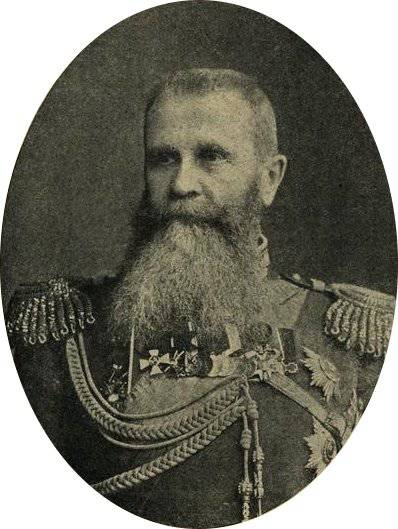
Commander-in-Chief of the armies of the South-Western Front Nikolai Iudovich Ivanov (1851 - 1919)
The chief of staff was the general of infantry, Mikhail Vasilyevich Alekseev. Mikhail Vasilyevich graduated from the Moscow cadet infantry school, distinguished himself in the Russian-Turkish war 1877 — 1878, where he was once an orderly for Skobelev. Under Plevna was wounded. After the war he received the rank of lieutenant, then a staff captain, commanded a company. Alekseev was distinguished by great diligence, he studied a lot on his own. In 1887, he entered the Nikolaev Military Academy, from which he graduated with honors, became the first in success. Later he was a professor of military stories in this academy.
During the Russo-Japanese War 1904 — 1905 became quartermaster general of the Manchurian army, was awarded several orders and the St. George gold weapons. Then he served in the General Staff, from 1908 onwards - Chief of Staff of the Kiev District, from 1912 onwards - Commander of the 13 Army Corps. From the beginning of the war he became chief of staff of the armies of the Southwestern Front.
During the war, Alekseev was recognized as the "largest military authority of the country." Brusilov noted that Alekseev was "a very clever man, quickly grasping the situation, an excellent strategist." Professor Golovin of the Academy of General Staff noted: “Alekseev was an outstanding representative of our general staff. Thanks to his inherent deep mind, immense work ability and military knowledge acquired by him individually, he was a head taller than other representatives of the Russian general staff. " Therefore, it was Alekseev who became the “brain” of the South-Western Front. He carried out the development plan of the Galician operation, led the troops. Ivanov exercised supreme leadership, signing the documents submitted.
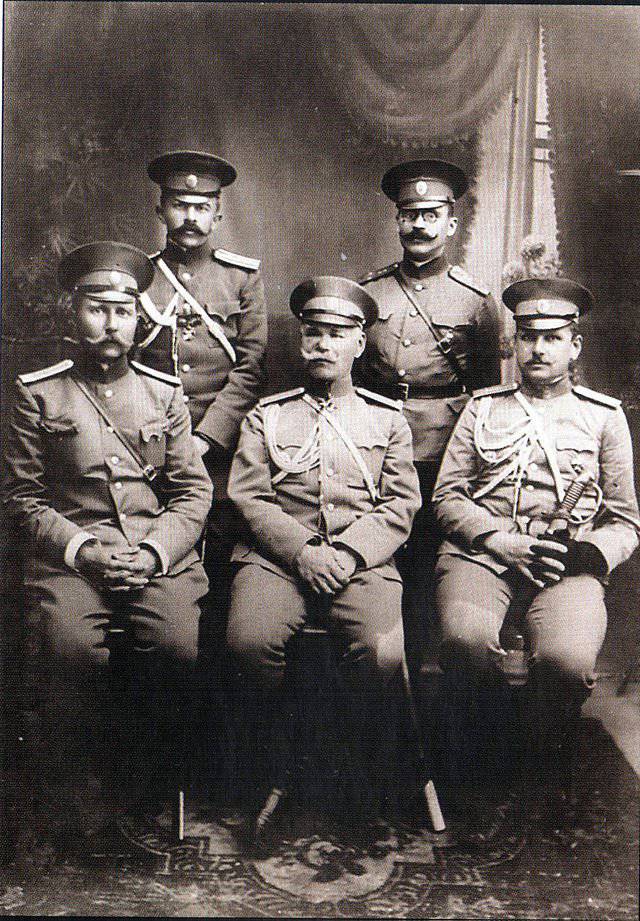
Adjutant-General M. V. Alekseev (center) with subordinates on the eve of the First World War. 1913 year
The forces of the parties
The South-Western Front consisted of four armies. By the beginning of the offensive, their composition included 35 1 / 2 infantry and 12 1 / 2 cavalry divisions, totaling about 600 thousand soldiers and officers with 2099 guns. After full concentration in the front, the 47 infantry and 18 1 / 2 cavalry divisions were to be. By the end of the battle, Russian forces had grown to 50 infantry and 20,5 cavalry divisions (about 1 million). By August 18, Russian armies were deployed at the front in 400 km from the Lublin to Proskurov area.
The Austro-Hungarian forces were superior to the Russians at the beginning of the battle. The Commander-in-Chief was Friedrich, the Archduke, Field Marshal F. Conrad von Götsendorf, Chief of Staff. The Austro-Hungarian command deployed three armies and an army group of Keves. In addition, a group of General G. Kummer was located in the Kraków area. In their composition were 31 infantry and 10 cavalry divisions, in total more than 700 thousand people with 1728 guns. In addition, the Austrians were waiting for the arrival of several divisions. Parts of the 2 Army were transferred from the Serbian Front to the Eastern Front. Soon Austrian forces grew to 35,5 infantry and 11 cavalry divisions, in total about 850 thousand soldiers. The Austrian-Hungarian troops were also to be supported by the German Landwehr corps of Voirsch.
Austro-Hungarian troops were deployed at the front in 310 km: the mouth of the river San, Yaroslav - Galich. Two-thirds of the Austro-Hungarian troops were assembled on a relatively narrow front between the mouth of the San and Peremyshl rivers as part of the 1 and 4 armies. In addition, they could have been supported by the Kummer group and the German Voirs corps. As a result, the Austrians had a nearly double margin against the Russian 4 and 5 armies to the north.
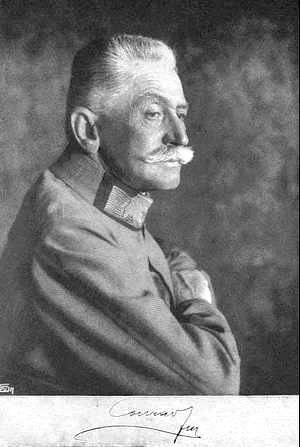
Chief of the General Staff of the Austro-Hungarian Army Franz Konrad von Höttsendorf (Göttsendorf)
Lublin-Kholm operation
With 5 — 6 (18 — 19), armies began to converge. By 20 in August, the corps of the 4 of the Russian army took the initial position for an offensive in the general direction of Peremyshl. On August 23, the commander of the Southwestern Front, Ivanov, received information that there were no significant enemy forces against the 5 army under the command of Pavel Plehve (the forces of the 4 army were not taken into account), and the position of Anton Xalm’s 4 army was dangerous, ordered 4 and 5 armies go on the offensive.
Counter battle of the 4 of the Russian and 1 of the Austrian armies. 23 August The 4 th army of Baron Salz was advancing on the 75-kilometer front. She moved to the Tanev forest belt. It consisted of three buildings - 14, 16 and Grenadier. All in all, the army consisted of 6 1 / 2 infantry and 2 1 / 2 cavalry divisions (109 thousand soldiers with 426 guns). The 14 Corps attacked the front of Zaklikov, Modliborzice, the 16 Corps - Yanov, Frampol and the Grenadiers - Turobin, Menagerie. Commander of the army was Anton Yegorovich Zaltz, who bravely acted as early as the Russian-Turkish war of 1877-1878, this old man (1843 of birth) already had time to rest.
Meanwhile, the Austrians were advancing from 20 in August, moving to the northern exits from the Tanev forest belt. Zavikhosts, Zaklikov and Modliborzhyts already had strong Austrian avant-gardes. As a result, the Russian and Austro-Hungarian troops had to go to the same line.
The 1st Austrian army of Dakl was composed of three corps (1st, 5th and 10th), a total of 9 1/2 infantry and 2 cavalry divisions (228 thousand people with 468 guns). Receiving from aviation intelligence data on the movement of Russian troops, the Dakl army received the task of defeating the enemy in the area of Krasnik, covering it with the left flank. As a result, the commander of the 4th Russian army, Salz, having no information about the situation on the northern outskirts of the Tanev Forests, substituted his right flank under a concentrated blow of the enemy army.
On August 23, in the Opoka region, the Russian 13 Cavalry Division faced the Austrian 3 Cavalry and 12 Infantry Divisions. Despite the approach of the 2 Infantry Brigade, the cavalry was crushed and moved deep into the rear of Uržend. 2-I rifle brigade entered into battle with three times superior enemy forces, was defeated and retreated to Lyudmilovka. As a result, the right flank of the Russian 14 corps was opened.
At this time, the troops of the Russian 14 Corps continued to attack, knocking down small enemy units. The corps went to the northern edges of the Tanev forests. Here he met with the troops of the 1-th and 5-th Austrian corps, which occupied fortified positions with Venglin. The Austrians outnumbered the Russians in 2 1 / 2 times. After a fierce battle, Russian troops began to retreat to the area of Krasnik. The battle continued until late in the evening, and only complete darkness and a thunderstorm that began began to stop the bloodshed.
The resulting gap included the 3-I Cavalry Division, 12-I, 5-I and 46-I Austrian infantry divisions and 101-I brigade of landsturm. They attacked freely. The command of the Russian 4 Army did not have any reserves to stop their movement.
Other corps of the Russian army did not collide with the enemy that day. The 16 Army Corps entered the Batorzh - Tokary line. Grenadier Corps went to the area Turoobin, N.-Ves. 3-I Don Cavalry Division, covering the left flank of the army, advanced units to Menagerie. The neighboring 25 Corps of the 5 Army was in the Izbiza area.
14-Cavalry Division of General Novikov (she was moving on the far right flank), received the task to conduct long-range reconnaissance and clear the area of the left bank of the Vistula from the enemy. The division from the very morning of August 23 fought with the 7 of the Austrian cavalry division. She also discovered the movement of large enemy forces from Opatov and on the Radomsky direction. It housed the troops of Kummer and Voirsha. Novikov’s division was reinforced by the Tula infantry regiment, and it received the task of pushing the enemy back to Ostrovets.
Source: Kolenkovsky A. The Maneuverable Period of the First World Imperialist War 1914
Battle at Krasnik. Departure of the Russian 4 Army
Baron Salz, having received data on the losses of the 14 corps, and bypassing the right flank of the army, decided to withdraw the troops to their initial positions on the Vilkolaz, Bykhava, Kshchonov lines. However, this order was late, the 16 and the Grenadier Corps had already engaged in battle with the enemy.
The commander of the 1 th Austrian army Dunkl continued to develop the offensive on his left flank, attracting to him the Kummer group (95-I, 106-I landshturmennyh divisions and 100-I landshturmenny brigade). As a result, the sweeping forces increased to 6 divisions.
24 August The 14 Corps, in a fierce battle near Krasnik, took the second blow of the enemy. Unable to contain the superior enemy forces, the Russian troops began to retreat. At this time, the troops of the 16 and the grenadier corps successfully attacked the Austro-Hungarian troops on the line Modliborzice, Janów, Goray, pressed them. However, given the success of the Austrians on the right flank of the Russian army, both corps were forced to begin withdrawal.
On August 24, the supreme Austrian command gave a new directive: the 1 Army was to attack Lublin; 4 Army I - to the north; from the 3 Army, a detachment was assigned to attack the Hrubieshov, the rest of the army and Keves' army group continued to support the attack of the main attack force. Kummer’s corps was supposed to continue its roundabout maneuver.
Thus, the attack of the Russian 4 th army Salz failed. Russian troops rolled back and moved to the defense. The 14 corps took up positions on the Zalesye, Struzha line, the 16 corps was at Batorzh, the grenadier corps was Tureobin, N.-Ves. The 13 Cavalry Division was stationed at Khodel, the Don Division at Shchebrishin. The reasons for the defeat lie in the mistakes of the army command. The interaction of the corps of the army was not established, as well as long-range intelligence. Did not take into account the value of Tanevskikh forests As in East Prussia (East Prussian operation), the actions of cavalry on long-distance intelligence were not adjusted. Although the cavalry could find out the location of the main grouping of the enemy. From the beginning of the battles, the commanders of cavalry units, being on the flanks of the army, considered their task accomplished, accompanying the movement of army corps, acting passively and indecisively.
Therefore, Salz for gross errors shifted. Alexey Ermolaevich Evert was appointed to his place. Alexey Yermolaevich in Manchuria was the chief of staff of Kuropatkin’s army, commanded the 13 corps, troops of the Irkutsk military district, was the ataman of the Trans-Baikal Cossack army. Evert was famous for his extreme pedantry. So, before starting the operation, he calculated the required number of shells, not even to hundreds, but to units. However, in a situation where the 4-I army was under threat of complete defeat, its accuracy and efficiency were very helpful. Alexey Ermolaevich quickly adjusted the management of troops and their supply. He reinforced the army with new compounds that did not arrive at the beginning of the offensive. As a result of August 27, the 4 Army took up positions in the Lublin area, and all attempts by Austro-Hungarian troops to break through their defenses were unsuccessful.
The mistakes of the Austro-Hungarian command also played their part. The Austrian troops attacked rather sluggishly, which allowed the Russian troops to retreat to Lublin. So, 25 August Russian troops broke away from the enemy almost to go.
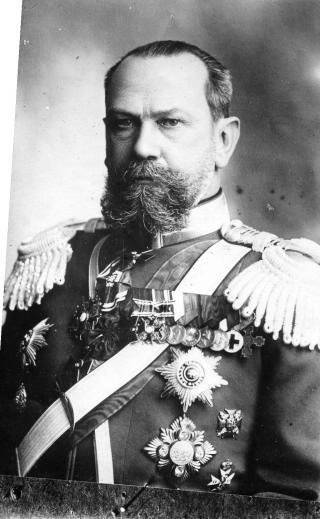
Alexey Ermolaevich Evert (1857 — 1926)
To be continued ...
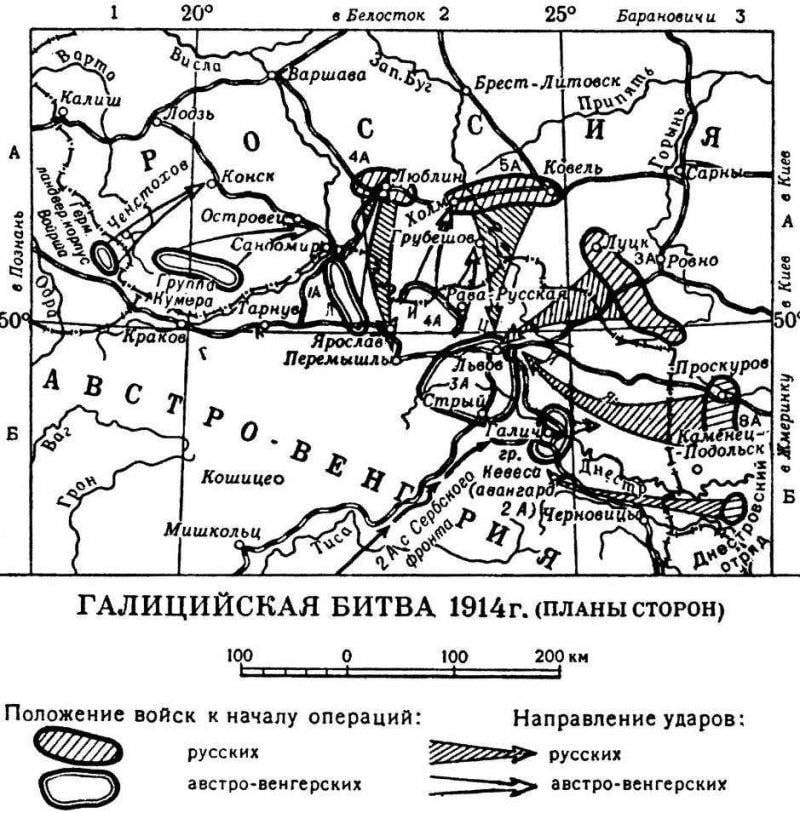
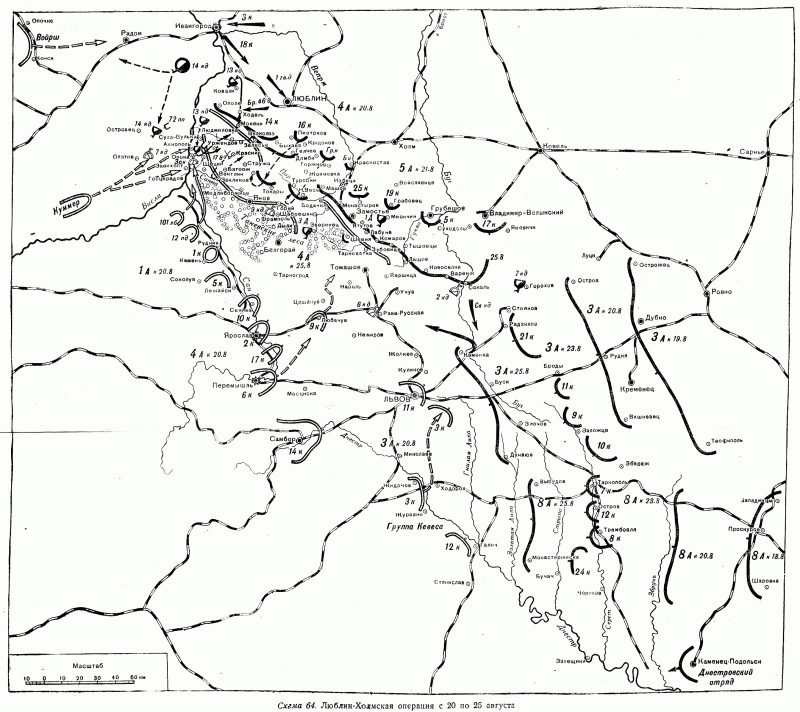
Information